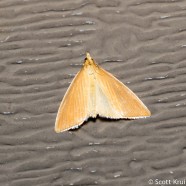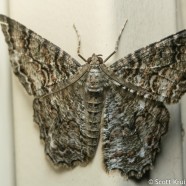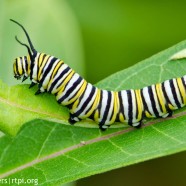Unknown Eggs
I found these eggs last month on Pineapple Sage (Salvia elegans) and Butterfly Bush (Buddleia) leaves. This macro view lets you see they are mostly white, not quite spherical, and feature two gold bands. They are certainly tiny, and they are almost certainly moth eggs…but what species? I have enough of a difficult time sorting through the hundreds and hundreds of adult moths we see, let alone eggs! The closest match that I could find were those of the Polyphemus Moth (Antheraea polyphemus) which would be exceptional. I saw some caterpillars had emerged with broken eggs and some snacked...
Read MoreStreaked Orange Moth (Nascia acutella)
This appears to be a Streaked Orange moth (Nascia acutella), a species that the Peterson Field Guide to Moths of Northeastern North America by David Beadle and Seabrooke Leckie describes as “uncommon” with its host plant “presumably grasses and sedges”. It is an example of how little we know about some of these scarce, cryptic, often local or specialized moth species. Only by extensive searching and subsequent discovery can we begin to unravel the mysteries of their life histories.
Read MoreTulip Tree Beauty
Here we have the Tulip Tree Beauty (Epimecis hortaria) moth, with the host plant not far away. These are large moths which seems to fit because the Tulip Tree itself can be an enormous life form.
Read MoreMonarch caterpillar
Monarch butterfly caterpillars like this one have been seen in higher than typical numbers, compared to recent years, in some areas. However, others in the region have told me they have seen a total of zero. It seems to be a year of dissenting data. Even last week at a meeting of naturalists from across the Chautauqua-Allegheny region we had some people excitedly reporting improved Monarch numbers while others dolefully spoke of few or none. The butterflies continue to be seen here and there and you should keep an eye out for them during this migratory period. I will be surveying the shores...
Read More







